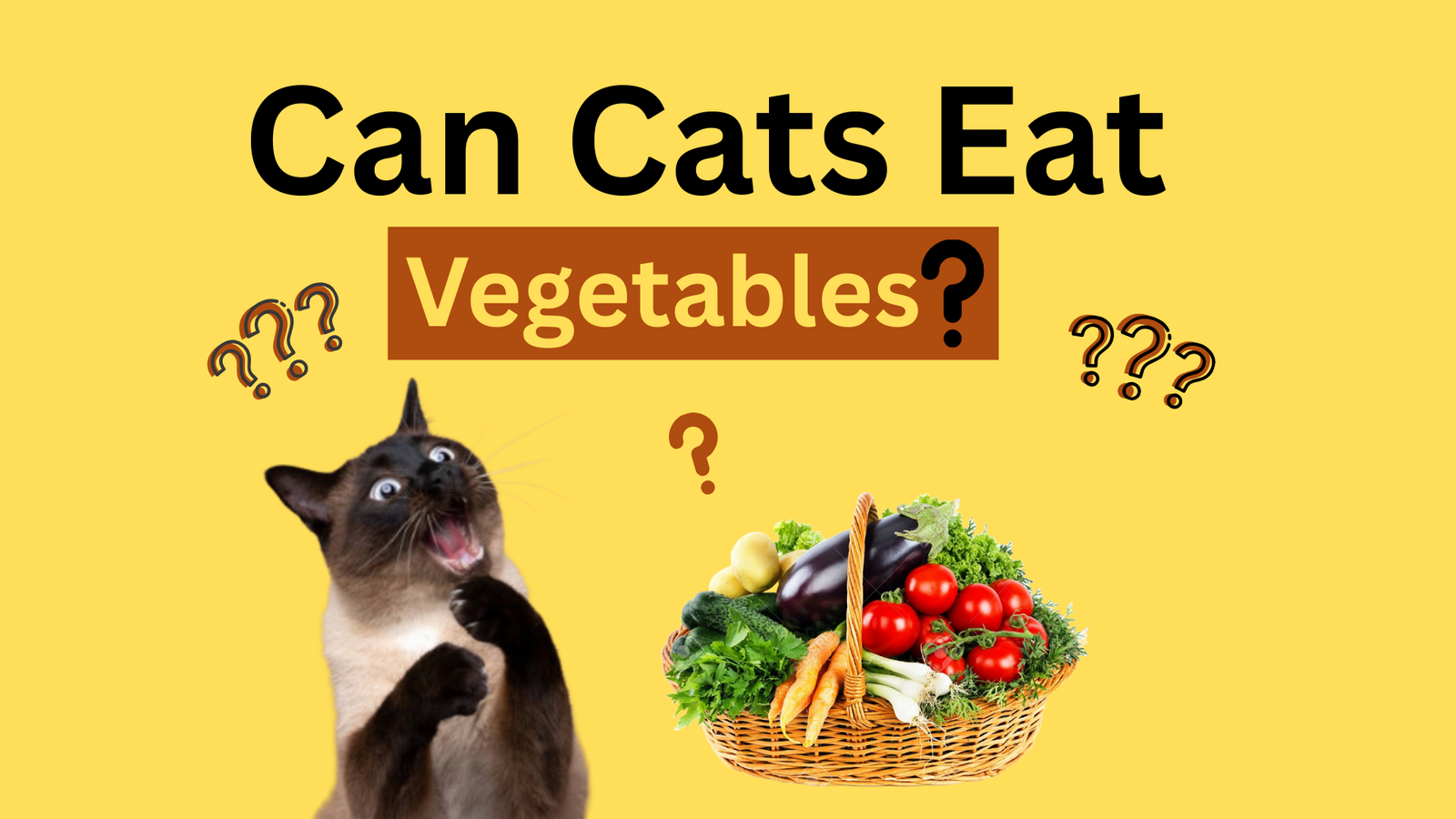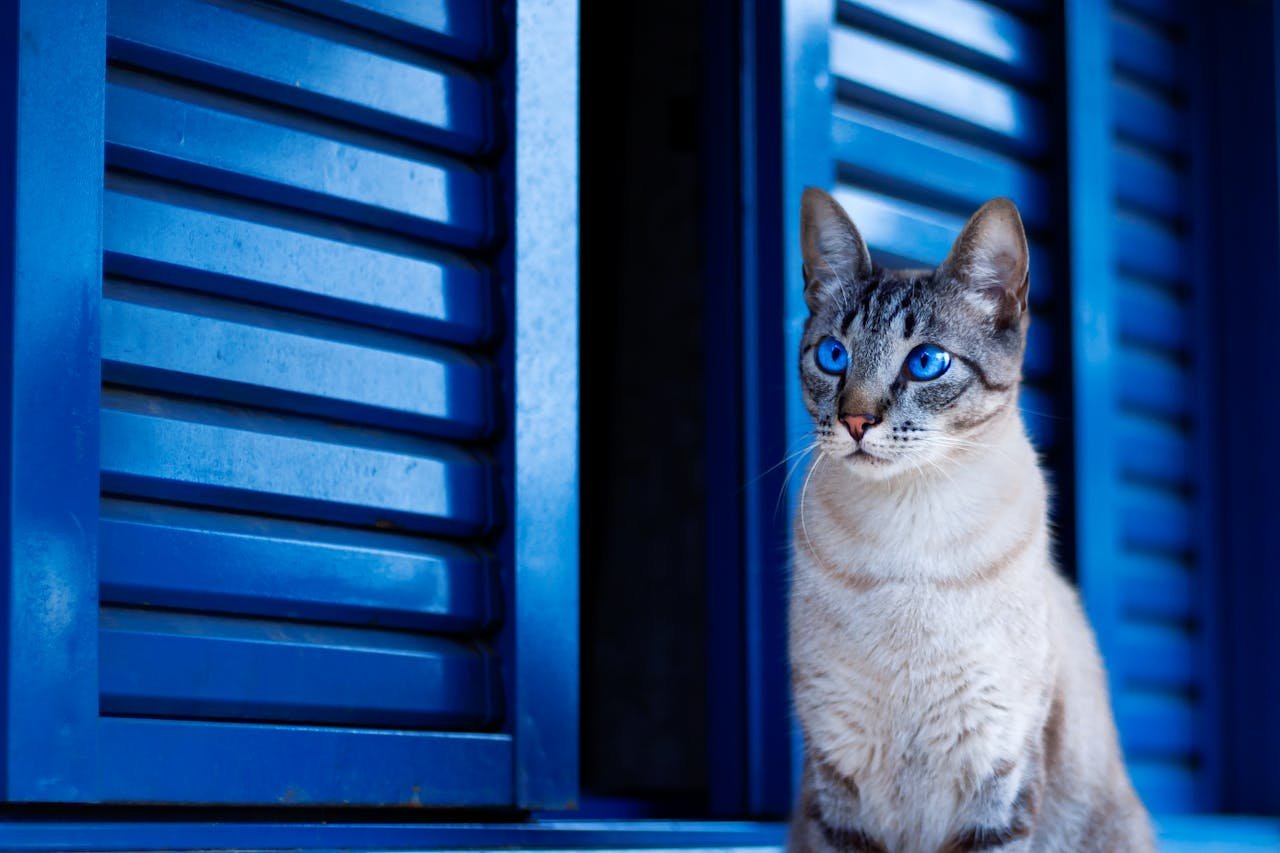Can Cats Eat Vegetables? Safe Choices, Risks, and Expert Advice 2025
Cats are naturally curious and often interested in what their humans are eating — but can cats eat vegetables without harm? While vegetables are a vital part of a human diet, cats are obligate carnivores whose bodies are designed to thrive on nutrients from animal protein, not plants. This means vegetables are not essential to their diet, but some types can be safe as occasional treats.
The answer to can cats eat vegetables is yes — but with caution. Certain vegetables like cooked pumpkin, peas, zucchini, and carrots can be beneficial in small amounts, offering fiber for digestion and hydration support. However, they should never replace the protein-rich meals cats need for strong muscles, healthy organs, and overall vitality. Vegetables should be plain, free from salt, butter, or seasoning, and served in small portions to avoid stomach upset.
Pet owners must also be aware that some vegetables are dangerous for feline health. Onions, garlic, leeks, scallions, and chives can damage red blood cells and lead to anemia. Raw potatoes, unripe tomatoes, and rhubarb leaves can cause serious digestive distress or even poisoning. For a cat’s safety, these vegetables should be kept completely out of reach.
If you choose to offer vegetables, introduce them gradually and observe your cat’s reaction. Every cat’s tolerance is different, and while some may enjoy nibbling on a bit of cooked zucchini or steamed carrot, others might refuse vegetables altogether. In 2025, veterinary nutritionists continue to recommend a meat-first diet, with vegetables as an optional, occasional supplement for variety — never a dietary staple.
So, can cats eat vegetables? Yes, but only the right ones, in the right way, and in very small amounts. Done correctly, it can be a safe way to add a little variety to your cat’s diet without compromising their health.
Can Cats Eat Vegetables in 2025?
Cats get all the essential nutrients they need — including vitamins and minerals — from meat and fish. While vegetables have excellent nutritional value for humans, your feline friend won’t gain much from them because their digestive system is designed for processing animal protein, not plant matter. That being said, certain vegetables can play a small role in supporting digestion and bowel movement, making them acceptable as occasional snacks.
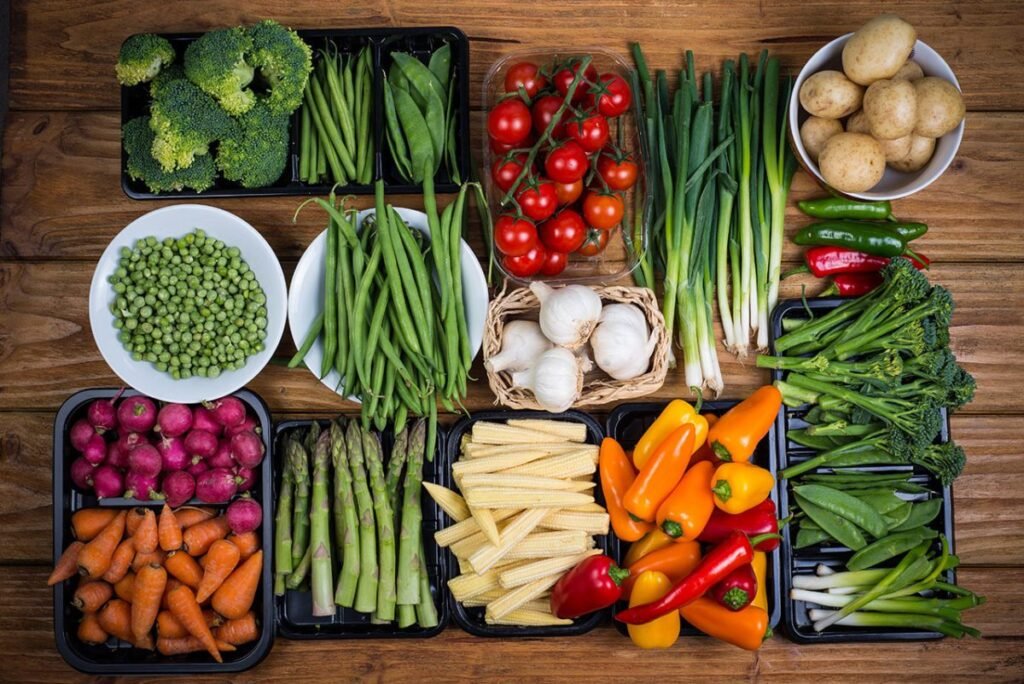
Why Add Vegetables to a Cat’s Diet?
The same reasons vegetables are recommended for people — and even for dogs — can apply in a smaller way to cats. Vegetables contain fiber, vitamins, minerals, and phytochemicals such as polyphenols, flavonoids, and carotenoids. Research suggests these compounds may help boost immunity, protect against free radical damage, reduce inflammation, support heart health, improve gut function, enhance skin and bone health, regulate hormones, protect eye health, and even slow the growth of certain cancer cells. While cats will never need vegetables for survival, these mild benefits can make certain safe veggies a nice, rare treat.
Related Post: Can Cats Eat Jell-O in 2025? What You Should Know
The Right Way to Feed Cats Vegetables
While your picky kitty might turn up her nose at greens, some cats are curious enough to try them. If they do, offering safe vegetables in small amounts can be fine — as long as meat remains the foundation of their diet. Cats are obligate carnivores, meaning their bodies are highly adapted to digest and metabolize animal protein. They rely on nutrients like taurine, vitamin A, and arachidonic acid, which are found only in animal products. Replacing a significant portion of their meals with vegetables can lead to dangerous nutrient deficiencies.
Safe Vegetable Feeding Guidelines
If you decide to add vegetables to your cat’s meals, treat them as a minor side dish rather than the main course. Choose only safe, cat-friendly options, cook them to soften fibre for easier digestion, and always serve them plain — without salt, seasoning, or oils. Even with safe vegetables, moderation is essential, as too much fibre can cause stomach upset. Before making any major dietary changes, consult your veterinarian to ensure your cat’s nutritional needs remain fully met.
The Bottom Line on Vegetables for Cats in 2025
In today’s world, where pet health awareness is at an all-time high, vegetables should be seen as an occasional supplement to a complete, balanced, meat-based diet. This approach lets your cat enjoy the curiosity-satisfying crunch of a vegetable snack while still getting all the essential nutrients they require for long-term health. By keeping vegetables an occasional treat and focusing on high-quality protein sources, you’re giving your cat the best possible foundation for a happy, healthy, and energetic life.
What Vegetables Can Cats Eat?
While cats are obligate carnivores by nature, meaning their bodies thrive on animal-based protein, certain vegetables can still play a supportive role in their overall health. When offered in moderation and prepared correctly, vegetables can provide hydration, gentle fiber for digestion, and a boost of vitamins and antioxidants. However, not all veggies are safe for felines — some can cause digestive upset or even toxicity. Below is a carefully curated list of vegetables that are considered safe for cats, along with tips on how to serve them responsibly.
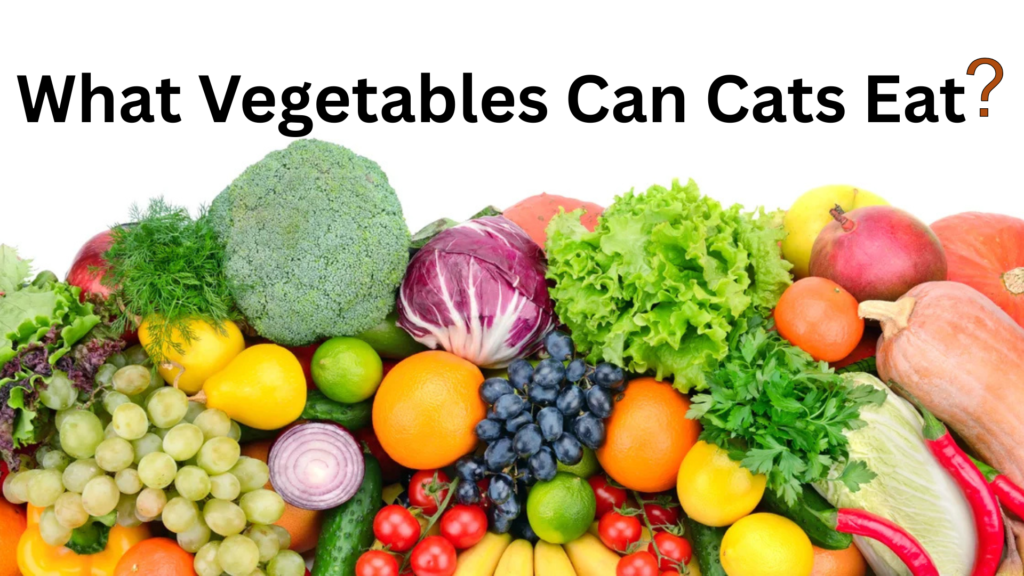
Cucumber – The Ultimate Hydration Snack
Cucumber is over 95% water, making it an excellent treat for cats that tend to drink less. Its light crunch and refreshing taste can also provide sensory enrichment. Serve peeled, washed, and sliced into tiny, manageable pieces to avoid choking hazards.
Broccoli – Natural Antioxidant Power
Steamed broccoli florets are rich in vitamin C, fiber, and antioxidants that help combat free radicals in the body. Many cats enjoy the soft texture after gentle cooking. Always avoid adding salt, butter, or oil, as cats’ digestive systems are sensitive to seasonings.
Carrots – Eye and Skin Support
A to support vision and skin health. Avoid raw carrots, as their firm texture may be difficult for cats to chew safely.
Asparagus – Gentle on Digestion
Lightly steamed asparagus offers antioxidants and mild digestive benefits. Due to its natural compounds that can change urine odor, it’s best offered occasionally and in very small amounts.
Peas – Tiny Green Nutrition Boosters
Peas are packed with vitamin K, manganese, and plant-based protein, making them a nutritious, bite-sized snack. They’re commonly included in high-quality cat food recipes, but fresh, cooked peas without any seasoning are an equally healthy option.
Green Beans – Low-Calorie Fiber Source
Green beans are an excellent way to add fiber to your cat’s diet, especially if they are overweight and need a filling, low-calorie treat. Serve them plain and steamed, and avoid offering them to cats with urinary or bladder stone history.
Spinach – Leafy Green with Anti-Inflammatory Benefits
Spinach provides magnesium, B vitamins, and plant antioxidants. However, it should only be given to healthy cats with no urinary tract or kidney issues, as its oxalate content can encourage stone formation in susceptible cats.
Pumpkin – A Natural Digestive Remedy
Plain, cooked pumpkin is one of the best home remedies for feline digestive troubles, helping with both constipation and diarrhea. Just a teaspoon mixed into food can restore digestive balance without harsh medications.
Corn – A Fun Occasional Treat
While corn doesn’t hold much nutritional value for cats, plain, cooked kernels or soft polenta can be an occasional, harmless snack. Never serve corn with butter, salt, or spices, as these additives can upset your cat’s stomach.
Related Post: Can Cats Have Mandarin Oranges? Expert Warnings 2025
Vegetables Cats Cannot Eat
Cats may seem curious about human food, but not all vegetables are safe for them. In fact, some are so toxic that even the smallest bite can cause life-threatening consequences. If your cat consumes any of the vegetables listed below, you should contact your veterinarian immediately.
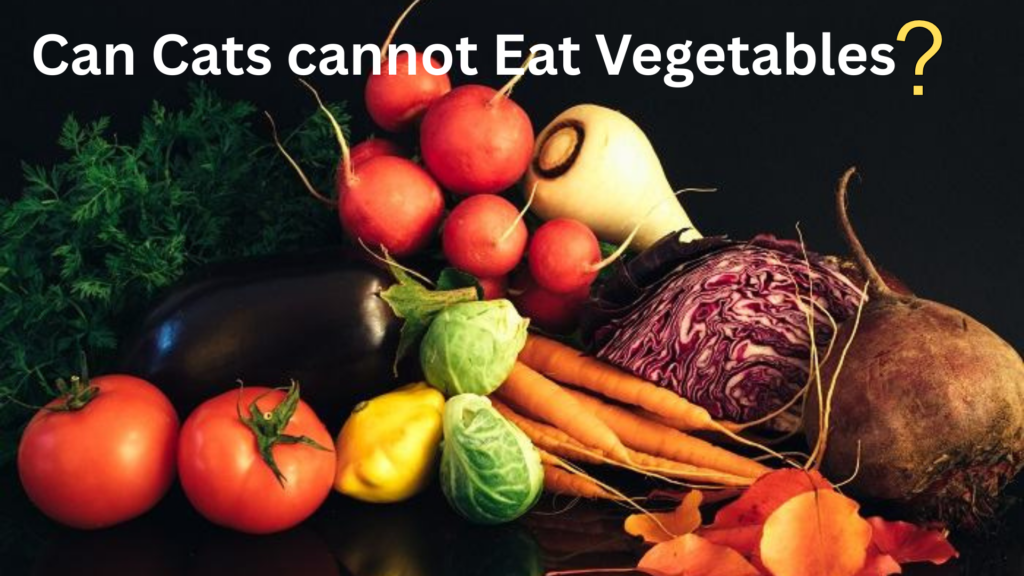
Garlic – The Deadliest Allium
Garlic is the most dangerous of all allium vegetables, containing compounds that can destroy your cat’s red blood cells. Even a small amount—such as a single clove—can trigger hemolytic anemia and severe gastroenteritis. Without urgent treatment, this can lead to organ failure and death. Garlic in any form, including powder, salt, or cooked dishes, poses the same risk and should never be fed to cats.
Tomatoes – Toxic in All Forms
Tomatoes contain solanine, a natural toxin that acts as a pesticide in plants. This compound is harmful to cats in both raw and cooked forms, meaning tomato sauces, soups, and any dish containing tomatoes should be avoided. If your cat eats tomatoes, monitor them closely for symptoms like vomiting, diarrhea, lethargy, dilated pupils, drooling, or disorientation.
Onions – Highly Toxic to Cats
Onions, whether raw, cooked, powdered, or dehydrated, are highly toxic to cats Even small amounts hidden in foods such as soups, gravies, or baby food can be dangerous. Symptoms of onion poisoning include vomiting, diarrhea, weakness, pale gums, rapid heartbeat, and bloody urine. If ingested, emergency veterinary attention is non-negotiable.
Safe vs. Unsafe Vegetables for Cats
| Vegetable | Safe for Cats? | Notes |
| Carrots | ✅ Yes – in moderation | Must be cooked and plain to avoid choking hazards. |
| Peas | ✅ Yes – in moderation | Common in commercial cat food; provides fiber and vitamins. |
| Zucchini | ✅ Yes – in moderation | Low-calorie and gentle on digestion. |
| Sweet Potatoes | ✅ Yes – in moderation | Must be cooked and unseasoned; avoid sugar and spices. |
| Green Beans | ✅ Yes – in moderation | Cooked or steamed; provides fiber without excess carbs. |
| Spinach | ⚠️ Caution | Avoid if the cat has urinary or kidney issues due to oxalates. |
| Tomatoes | ❌ No | Contains solanine; can cause gastrointestinal and neurological issues. |
| Garlic | ❌ No | Very poisonous; damages blood cells and can cause death |
| Onions | ❌ No | Causes anemia even in small amounts. |
| Leeks & Chives | ❌ No | Part of the allium family; toxic to feline blood cells. |
| Raw Potatoes & Skins | ❌ No | Contain solanine; harmful to digestion and nervous system. |
| Rhubarb | ❌ No | High in oxalates; can damage kidneys. |
| Mushrooms | ❌ No | Many species cause severe illness or death. |
| Tomato Leaves & Stems | ❌ No | Extremely high solanine content; highly poisonous. |
Additional Vegetables That Should Be Avoided
Other Allium Vegetables Cats Must Avoid (Leeks & Chives)
Their compounds cause oxidative damage to red blood cells, leading to anemia and potential organ damage.
Raw Potatoes and Potato Skins — A Silent Danger for Cats
Uncooked potatoes and their skins contain solanine, a toxic alkaloid that can cause gastrointestinal distress, lethargy, and even nervous system issues in cats. Cooking reduces solanine levels, but potatoes prepared with salt, dairy, or seasonings can still upset your cat’s digestive system.
How Rhubarb Can Harm Your Cat’s Kidneys
Rhubarb contains oxalates, which can interfere with calcium absorption and cause kidney damage in cats. Both the stalks and leaves are unsafe, and ingestion can lead to drooling, weakness, tremors, or seizures.
Why Most Mushrooms Are Unsafe for Cats
Symptoms vary depending on the mushroom species but can include vomiting, diarrhea, liver failure, and neurological problems. Unless a veterinarian confirms the safety of a specific mushroom, it’s best to avoid them altogether.
Tomato Leaves and Stems — Even More Toxic Than the Fruit
Even though ripe organic tomatoes are dangerous, their green parts—leaves and stems—are far more toxic due to high solanine concentrations. These plant parts can quickly trigger poisoning in cats, leading to serious health complications.
Potatoes: A Special Case
Are White Potatoes Ever Safe for Cats?
Raw white potatoes and their green parts are highly toxic because of solanine. However, small portions of plain, thoroughly cooked potatoes without salt, butter, or spices may be safe as an occasional treat. Any potato-based dish containing milk or seasonings should be avoided, as cats are lactose-intolerant and sensitive to added sodium.
Can Cats Eat Sweet Potatoes Safely?
Unlike white potatoes, sweet potatoes do not contain solanine. They can be offered in small, plain, cooked portions as a treat. Many high-quality cat foods now include sweet potatoes as a source of fiber and nutrients. However, they should still be given in moderation, as cats are obligate carnivores and do not require carbohydrates in their diet.
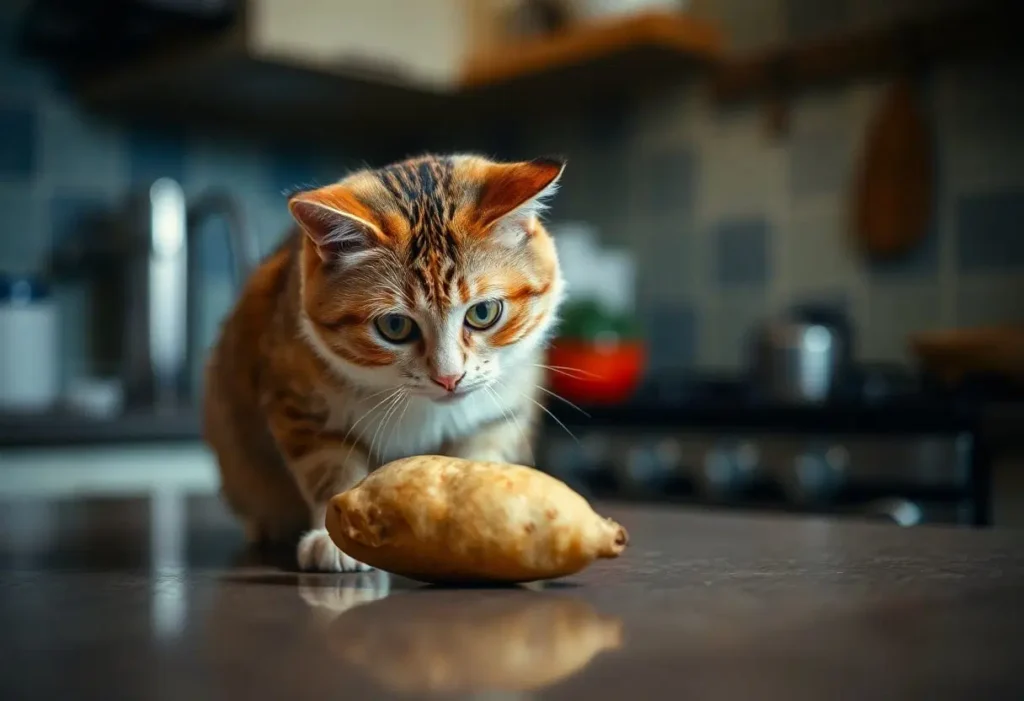
Final Thoughts on Can Cats Eat Vegetables
In 2025, pet nutrition experts agree that while the answer to can cats eat vegetables is yes, it comes with important limitations. Cats gain all their essential nutrients from meat, so vegetables should only serve as an occasional supplement, not a replacement for a protein-rich diet. Offering safe options like cooked pumpkin, peas, zucchini, or carrots in tiny portions can add variety and mild digestive benefits, but unsafe vegetables — such as onions, garlic, raw potatoes, or unripe tomatoes — should be avoided entirely.
Ultimately, feeding vegetables to cats should be a thoughtful choice, guided by safety, moderation, and your cat’s individual preferences. By knowing which vegetables are safe and which are harmful, you can give your feline friend the occasional plant-based treat without risking their health.
FAQs About Can Cats Eat Vegetables
Can cats eat cucumbers?
They’re hydrating but low in nutrients, so they should only be an occasional treat.
What vegetables should cats never eat?
Avoid onions, garlic, leeks, chives, raw potatoes, tomatoes, and mushrooms, as they contain compounds that can harm cats even in small doses.
How often can I give my cat vegetables?
Safe vegetables should be no more than 5–10% of a cat’s diet, offered once or twice a week alongside a meat-based diet.
Can cats eat raw vegetables?
Some raw vegetables are fine if soft and safe, but cooking makes them easier to digest and reduces choking risks.
Why do cats sometimes like vegetables?
Cats may be curious about the texture or smell, even though they don’t need plant-based foods nutritionally.
For More Visits: SiameseMania
Also Read: Can Cats Eat Rice Cakes? Safe or Risky Treat Guide
